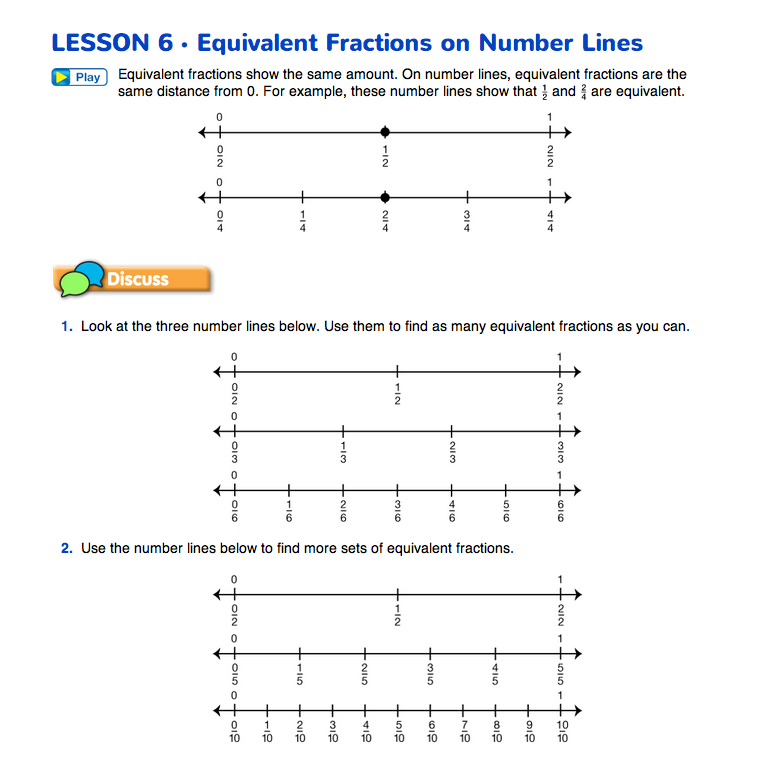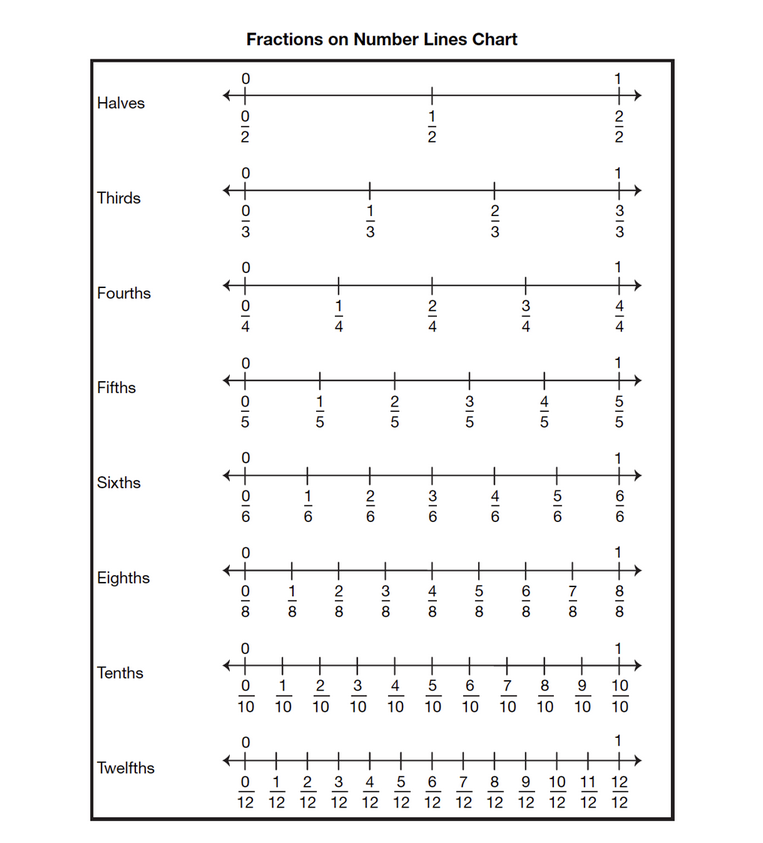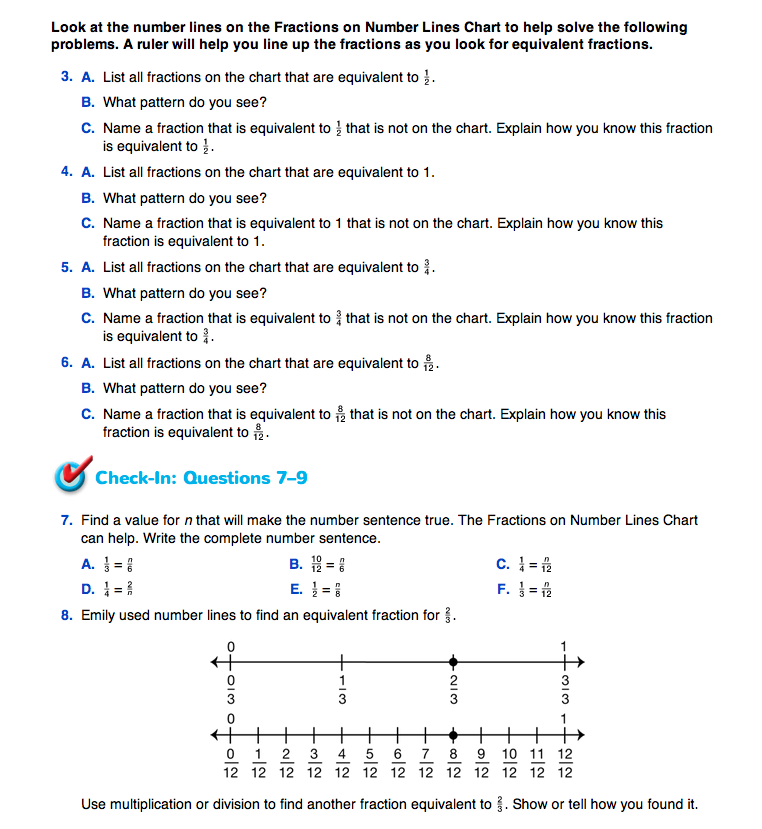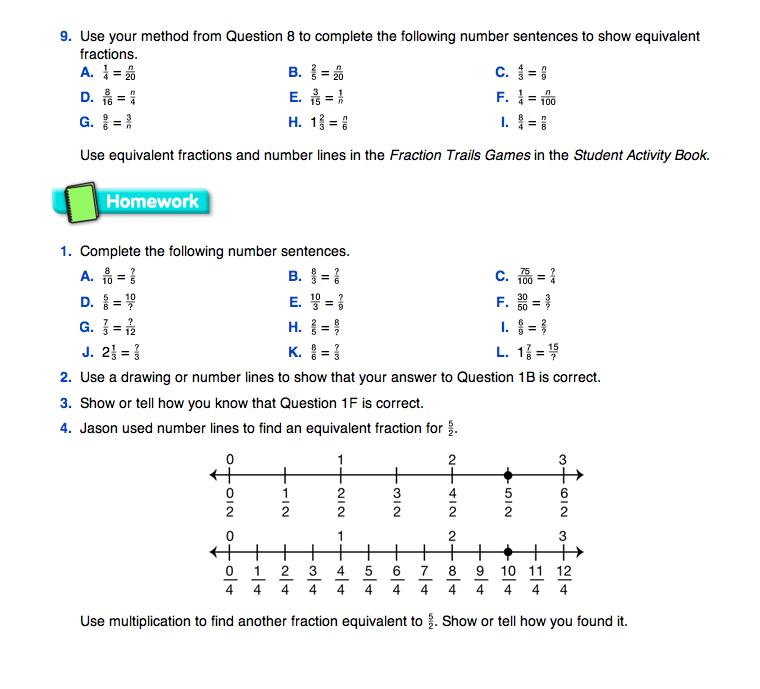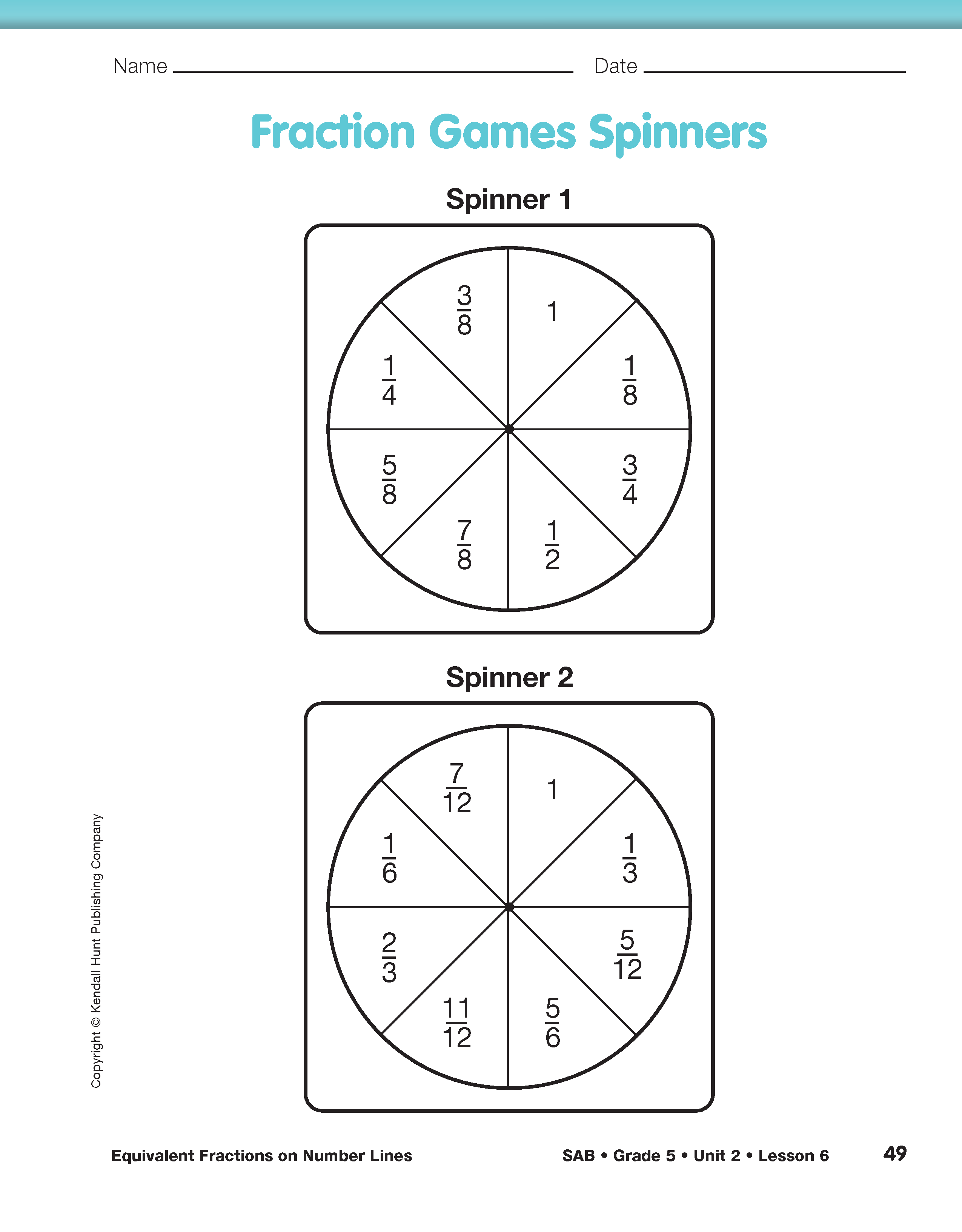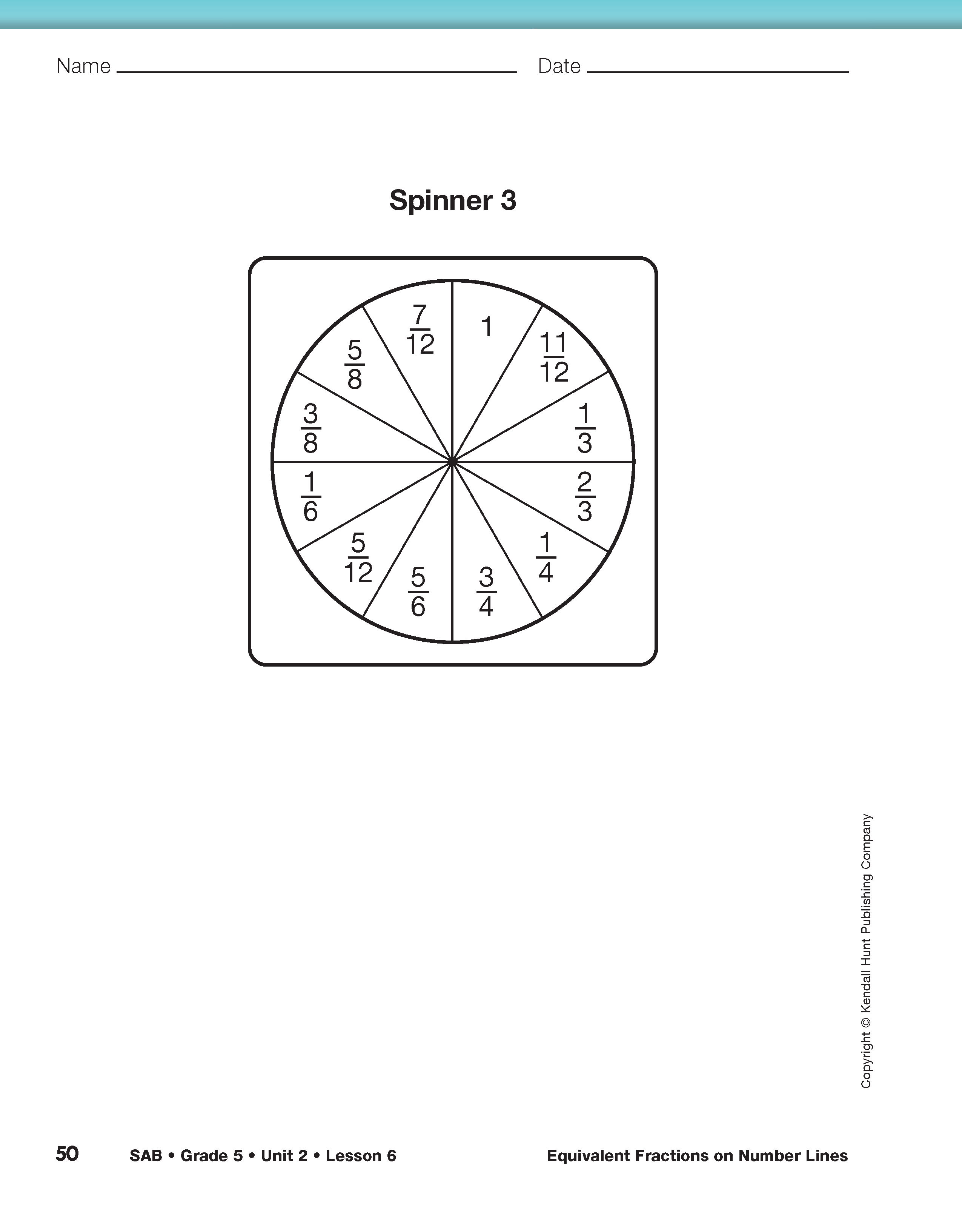Equivalent Fractions on Number Lines
Est. Class Sessions: 2–3Developing the Lesson
Part 1. Equivalent Fractions on Number Lines.
Use Number Lines and Patterns to Find Equivalent Fractions. In this lesson, students work with number lines to find equivalent fractions. Number lines offer a visual tool to determine equivalencies. When fractions are represented on number lines, two fractions are equivalent if they are the same distance from zero. Equivalent fractions can label the same point on the number line.
Direct students to the Equivalent Fractions on Number Lines pages in the Student Guide. Ask them to look at the number lines in the opening section. These lines show that 1/2 and 2/4 are equivalent fractions because they are the same distance from zero.
Ask:
Record students' findings as number sentences as they report them. Ask students to consider the number lines in Questions 1–2 and to list all the equivalent fractions they find.
After solving these problems as a class, display the following number sentences and ask:
Next have students work individually or with partners to answer Questions 3–8. To solve the problems, students can use a ruler or the edge of a piece of paper to line up the tick marks on the Fractions on Number Lines Chart. Fractions that lie on the same vertical line are the same distance from zero and are therefore equivalent.
Question 3 asks students to find fractions equivalent to 1/2. If they line up a ruler to make a vertical line through the one-half mark on the first number line, they will find fractions on other number lines that are the same distance from zero: 2/4, 3/6, 4/8, 5/10, and 6/12. The question asks for a pattern. Some students might notice that each fraction equivalent to 1/2 can be obtained by multiplying the top and bottom of 1/2 by the same number. See Content Note. For example,

Another pattern students explored in Lesson 2 is that for all fractions equivalent to 1/2, the numerator is always one-half of the denominator.
In Question 4, students find patterns for fractions equivalent to 1. Probably the most common response will be that for fractions equivalent to one, the numerator and denominator are equal.
Students continue to use the Fractions on Number Lines Chart to find equivalent fractions in Questions 5–7. Question 7 asks them to find equivalent fractions using number sentences in the form: 1/3 = n/6.
In Question 8, students are asked to use multiplication or division to find a fraction equivalent to 2/3.
Share Strategies for Finding Equivalent Fractions. Upon completion, display the Fractions on Number Lines Chart page from the Student Guide Reference section. Discuss different ways to find equivalent fractions.
To facilitate discussion, ask:
Record students' different strategies for finding equivalent fractions on chart paper with examples such as 1/3 × 2/2 = 2/6 and 1/2 = 2/4 = 3/6 = 4/8. Encourage students to share other strategies as well. Then assign Question 9. Students will apply these patterns and strategies to find equivalent fractions that are not on the number lines.
















